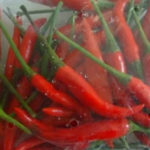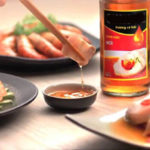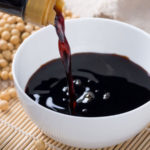There are many types of fish sauce available on the market: traditional fish sauce, vegetarian fish sauce, and industrial fish sauce. How are they different? How should fish sauce be used properly?
1. Distinguishing the types of fish sauce
Traditional Fish Sauce
Main Ingredients: Fish and salt, fermented for a long period.
Color: Straw-colored or reddish-brown. It turns darker when exposed to air after a few hours.
Taste and Flavor: Intense flavor, high salinity, and quite sharp. However, even when mixed with other ingredients, you will still taste the sweetness.
Aroma: A strong, characteristic fragrance. With a gentle stir, you will easily notice the distinct scents of sea salt and fish.
Nitrogen Content: Usually 10 degrees or higher. Those above 25 degrees are fish sauce concentrates or fish sauce ears, and those above 30 degrees are special versions of these two types.
Shelf Life: 2-3 years, 30-45 days after opening. If there is salt sediment at the bottom of the bottle, you can still use it with peace of mind without worrying about negative health effects.

Ready-Mixed Fish Sauce
Main Ingredients: Fish sauce (30%-40%), sugar, vinegar, garlic, and chili.
Color: Straw-colored with clarity, plus finely chopped garlic and chili, very attractive.
Taste and Flavor: A harmonious blend of fish sauce and other ingredients. It has a mild sweetness and salinity, easy to eat.
Aroma: Despite the variety of ingredients, they all enhance the fragrance of the fish sauce. When stirred evenly or warmed, you will perceive the scents of garlic and vinegar more clearly.
Nitrogen Content: Depending on the type of fish sauce used, the nitrogen content varies. Typically, it ranges from 10 to 15 degrees.
Shelf Life: 12 months, and for opened bottles, it is best to consume within 1 week.
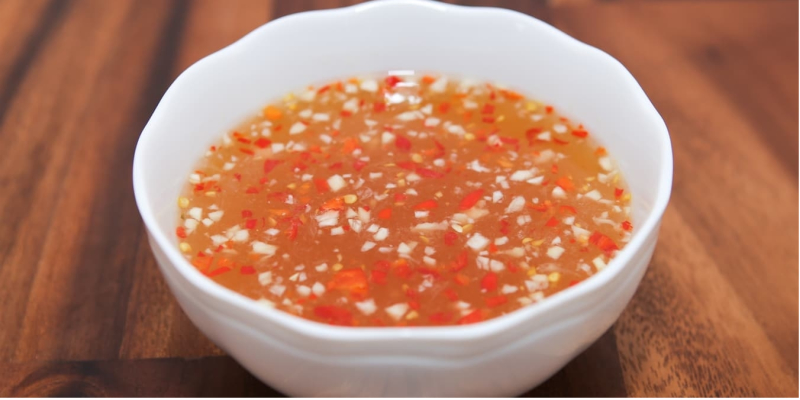
Vegetarian Fish Sauce
Main Ingredients: Sea salt, soybeans, pineapples, and natural fermentation.
Color: Dark reddish-brown with a slight thickness. After an hour of air exposure, it turns significantly darker, sometimes almost black.
Taste and Flavor: Rather bland compared to other types of fish sauce. It has a strong sweetness but maintains a vegetable freshness.
Aroma: A subtle fragrance of beans and pineapples. Although made from vegetables, vegetarian fish sauce still contains flavoring agents that impart a mild fishy aroma characteristic of seawater.
Nitrogen Content: Many people believe that vegetarian fish sauce has no nitrogen content. However, it does contain vegetable protein (5-6 degrees), which is beneficial for health.
Shelf Life: 12 months, to be used within 30 days of opening.
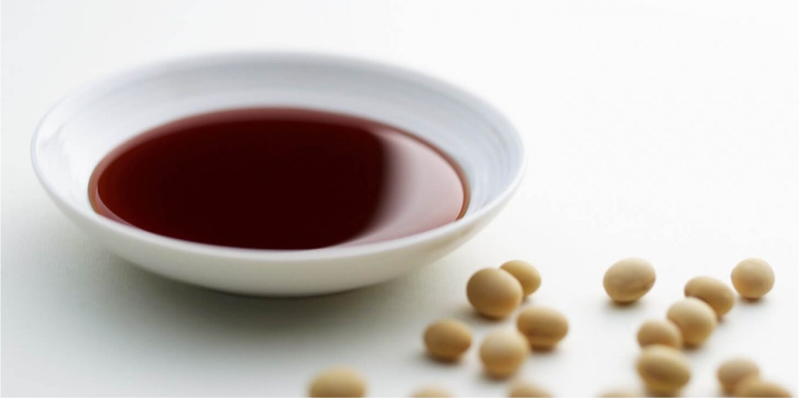
Industrial Fish Sauce (Dipping Sauce)
Main Ingredients: Salt, sugar, flavor enhancers, preservatives, and fish essence.
Color: Yellow-brown with attractive clarity. If the color remains unchanged when exposed to air for an hour, it may contain artificial colors, which are not good for health.
Taste and Flavor: Intense salinity with a blend of sharp sweetness. Compared to traditional fish sauce and vegetarian fish sauce, it is quite watery.
Aroma: A mild fragrance of seawater. Even when heated, the sea salt scent remains faint. It can easily be used to make various dipping sauces without adding water.
Nitrogen Content: Less than 10 degrees of nitrogen, indicating a low nutritional content.
Shelf Life: 12 months, and it is best to consume within 30 days of opening.
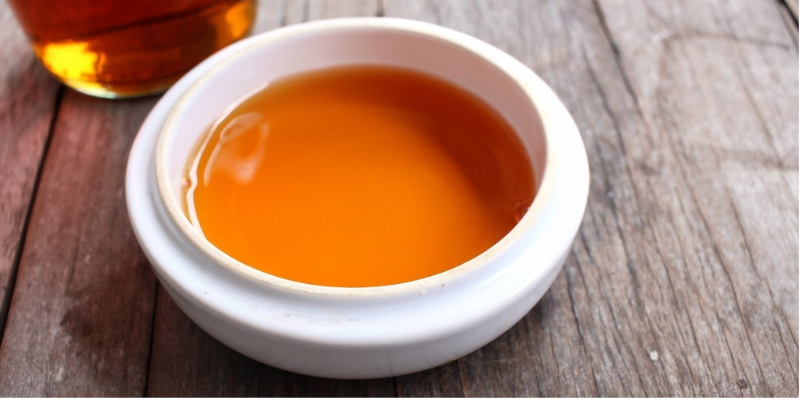
2. Choosing the right fish sauce
Color: Opt for fish sauce with a reddish-brown, straw-colored, or reddish-brown hue and clarity. Avoid murky, green, or grayish fish sauce.
Aroma and Taste: High-quality fish sauce will have a strong, characteristic fragrance of salt and fish, with a rich taste and sweet aftertaste. Vegetarian fish sauce will have a bean fragrance, a mild taste, and a pleasant sweetness. Avoid products with initial sweetness or sharpness.
Nitrogen Content: Traditional fish sauces typically have a high nitrogen content and, therefore, do not require preservatives.
Notes:
– Fish sauce concentrate and fish sauce ears do not freeze when placed in the freezer.
– Fish sauce that does not change color when left in the air for an hour may contain artificial colors and chemicals that are harmful to health.
– Higher nitrogen content does not always equate to better taste; it depends on the manufacturer’s recipe.
– Choose products from reputable and quality manufacturers with clear origins. Do not buy fish sauce with unclear labels and uncertain production processes that do not guarantee food safety.

3. Safe usage of fish sauce
The body’s systems, especially the digestive and excretory systems, are not yet fully developed in infants. Therefore, the use of fish sauce, which is high in salinity and nitrogen content, can stimulate continuous cell activity, negatively affecting their health. Thus, fish sauce should not be given to children under 1 year of age.
For older children, mothers can use a small amount of fish sauce, about 1 teaspoon per day. If you want to use more, consult your doctor.
Fish sauce also contains high levels of sodium. When giving fish sauce to children, mothers should balance the amount of sodium absorbed into the body through their daily diet.
– 1-3 years old: 1.5g/day
– 4-8 years old: 1.9g/day
– 9-13 years old: 2.2g/day
– 14-18 years old: 2.3g/day
People with kidney, bone, blood pressure, diabetes, or cardiovascular problems should not consume fish sauce. It can increase the absorption of sugar, energy, and fat, negatively impacting health.
Add fish sauce only when the food is almost cooked. Prolonged boiling will cause a significant loss of vitamins and essential minerals in the fish sauce.

4. Using fish sauce for different dishes
– Boiling or steaming: Use pure fish sauce without dilution. Add chili and lemon to taste. Fish sauce will enhance the natural sweetness of the food and ensure the provision of essential nutrients.
– Frying: Often accompanied by ready-mixed fish sauce with a sweet and sour taste to prevent greasy flavors. You can also use other types of fish sauce, diluted and mixed with garlic, chili, lemon, and sugar.
– Soup: Only add fish sauce after turning off the heat. This will prevent the soup from turning sour and retain the large amount of vitamins in the fish sauce that would otherwise be lost due to boiling and evaporation.
– Stewing: When the meat or fish is almost cooked and starting to soften, add a little fish sauce to enhance the flavor and texture. High temperatures during stewing can cause a significant loss of vitamins and minerals, so it is best to use industrial fish sauce for this cooking method.
– Do not use fish sauce with stewed shrimp or prawns. It will diminish their flavor and reduce calcium absorption.
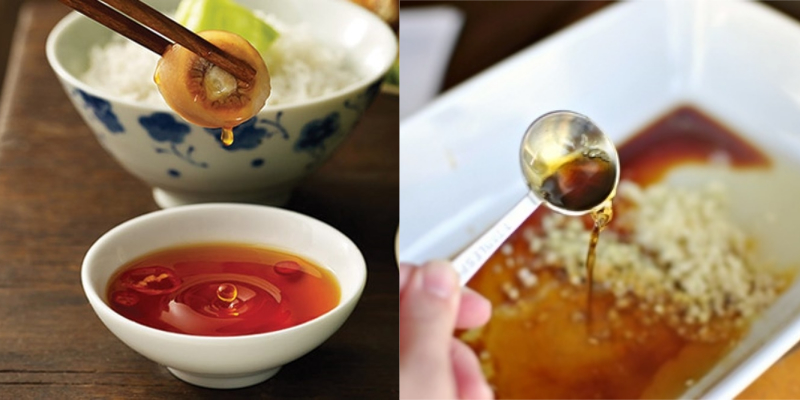
For more information:
4 Strategies for Storing Chili for One Month
Do you want to enjoy the fresh, spicy flavor of chili peppers all month long? Look no further! This article provides tips and tricks for storing chili peppers so that they stay fresh and flavorful for up to a month. Learn how to best preserve your peppers and savor their zesty taste for weeks to come.

























